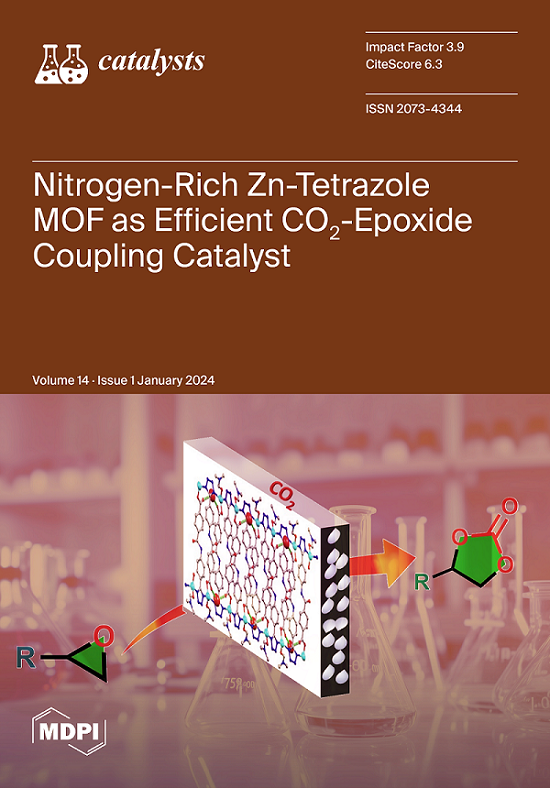A Mechanistic Study of Methanol Steam Reforming on Ni2P Catalyst
IF 4
3区 化学
Q2 CHEMISTRY, PHYSICAL
引用次数: 5
Abstract
Methanol steam reforming (MSR) is a promising technology for on-board hydrogen production in fuel cell applications. Although traditional Cu-based catalysts demonstrate high catalytic activity and selectivity towards CO2 relative to CO, which is produced via methanol decomposition, they suffer from poor thermal stability and rapid coke formation. Nickel phosphides have been widely investigated in recent years for many different catalytic reactions owing to their remarkable activity and selectivity, as well as their low cost. In this work, we present a mechanistic study of methanol decomposition and MSR pathways on Ni2P using density functional theory (DFT) calculations. DFT-predicted enthalpic barriers indicate that MSR may compete with methanol decomposition on Ni2P, in contrast to other transition metals (e.g., Pt, Pd, and Co) which primarily decompose methanol into CO. The formaldehyde intermediate (CH2O*) can react with co-adsorbed hydroxyl (OH*) from water dissociation to produce H2COOH* which then undergoes subsequent dehydrogenation steps to produce CO2 via H2COOH*→ HCOOH* → HCOO* → CO2. We also examined the conversion of CO into CO2 via the water–gas shift (WGS) reaction, but we ruled out this pathway because it exhibits high activation barriers on Ni2P. These findings suggest that Ni2P is a promising new catalyst for MSR.Ni2P催化剂上甲醇水蒸气重整的机理研究
甲醇蒸汽重整(MSR)是一种很有前途的燃料电池车载制氢技术。尽管传统的铜基催化剂相对于通过甲醇分解产生的CO表现出对CO2的高催化活性和选择性,但它们存在热稳定性差和焦炭快速形成的问题。磷化镍由于其显著的活性和选择性以及低成本,近年来在许多不同的催化反应中得到了广泛的研究。在这项工作中,我们使用密度泛函理论(DFT)计算对Ni2P上的甲醇分解和MSR途径进行了机理研究。DFT预测的焓垒表明,与主要将甲醇分解为Co的其他过渡金属(如Pt、Pd和Co)相比,MSR可能与甲醇在Ni2P上的分解竞争。甲醛中间体(CH2O*)可以与水离解产生的共吸附羟基(OH*)反应产生H2COOH*,然后进行后续脱氢步骤,通过H2COOH产生CO2*→ HCOOH*→ HCOO*→ CO2。我们还研究了通过水煤气变换(WGS)反应将CO转化为CO2的情况,但我们排除了这一途径,因为它对Ni2P表现出高活化势垒。这些发现表明Ni2P是一种很有前途的MSR新催化剂。
本文章由计算机程序翻译,如有差异,请以英文原文为准。
求助全文
约1分钟内获得全文
求助全文
来源期刊

Catalysts
CHEMISTRY, PHYSICAL-
CiteScore
6.80
自引率
7.70%
发文量
1330
审稿时长
3 months
期刊介绍:
Catalysts (ISSN 2073-4344) is an international open access journal of catalysts and catalyzed reactions. Catalysts publishes reviews, regular research papers (articles) and short communications. Our aim is to encourage scientists to publish their experimental and theoretical results in as much detail as possible. Therefore, there is no restriction on the length of the papers. The full experimental details must be provided so that the results can be reproduced.
 求助内容:
求助内容: 应助结果提醒方式:
应助结果提醒方式:


